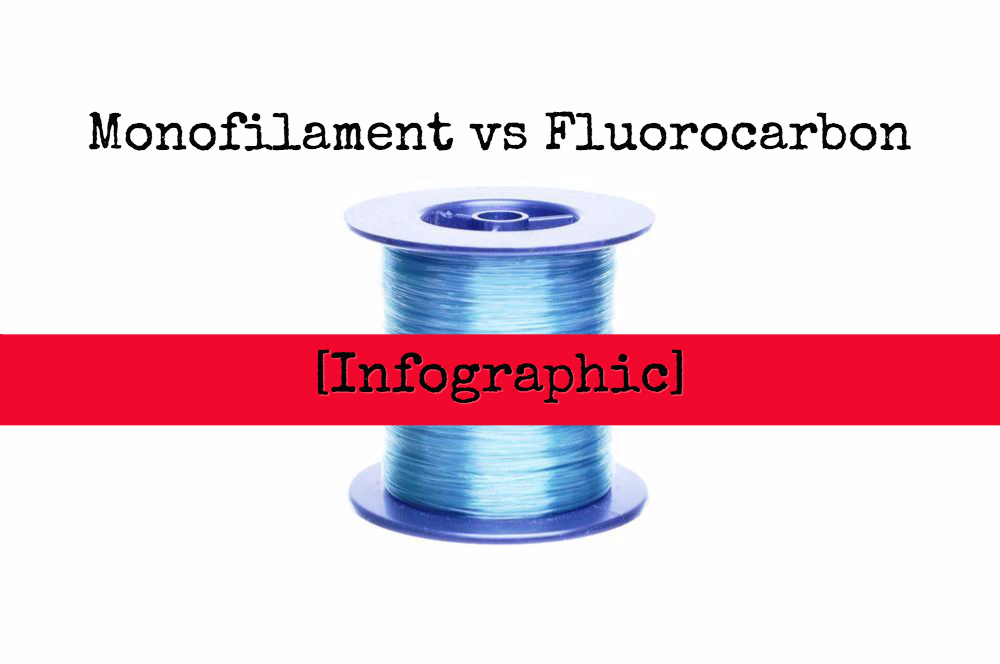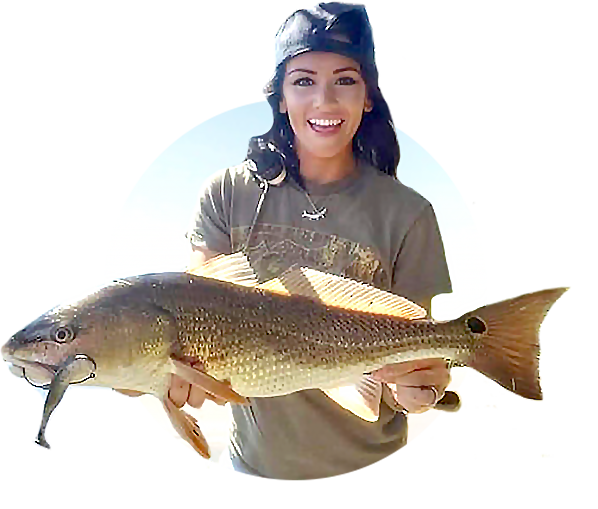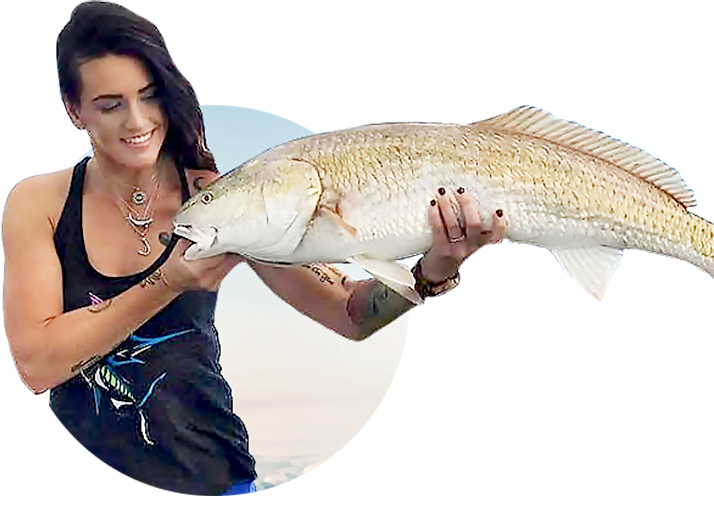Infographic: Monofilament vs Fluorocarbon Fishing Line
- By: Joseph Simonds
- on
- Found In: Fishing Tips

We have had a few recent inquiries from anglers that are getting confused with all of the different types of fishing lines… particularly monofilament vs. fluorocarbon.
And you can’t blame them either! Just walk into any big fishing equipment or outdoor store and you will be overwhelmed with all of the different types, styles, colors, and options in fishing line these days.
In many fishing stores, it takes at least a full two aisles just to showcase all of their different fishing lines!
One of the main confusions we are hearing in regards to fishing lines is: “What is the difference between monofilament fishing line and fluorocarbon fishing line?”
To start, know that fluorocarbon line is actually a type of monofilament line. Fluorocarbon’s most beneficial characteristic is that it has a refractive index that is much closer to that of water compared to other types of monofilament… meaning that fluorocarbon is less visible to fish compared to other types of line.
Fortunately, we found this great infographic below (from Berkley’s website) that explains the many differences between fluorocarbon and monofilament fishing lines.
Monofilament vs Fluorocarbon Fishing Line

(Related: to see the best fishing knots for every single fishing situation, click here)
Conclusion
As you can probably see, there is no “one-size fits all” answer to the best fishing line when comparing fluorocarbon to the other types of monofilament options. At the end of the day, it is going to come down to your needs for a particular situation. And hopefully this fishing line infographic helped you out in terms of simplifying it side by side.
Finally, if you liked this infographic, then please share with your friends using the social share buttons.
Help spread fishing education!
Related categories:
STOP WASTING TIME ON THE WATER!
Do what the “SMART ANGLERS” are doing and join the Insider Club.
Here’s what you’ll receive today when you join:
- Weekly fishing reports and TRENDS revealing exactly where you should fish every trip
- Weekly “spot dissection” videos that walk you through all the best spots in your area
- Exclusive fishing tips from the PROS you can’t find anywhere else
- Everything you need to start catching fish more consistently (regardless if you fish out of a boat, kayak, or land).









can i use flurocarbon line to make my leader in the purpose to save money thank you
which millimeters of monofilement is good for big fish fishing?
The fishing line cannot, at all, go with a confusing nature of selecting it and using it in wrong manner! Where you are pursuing your game fishing and which water surface you are deepening down your lures will also define what to choose, a mono or fluorocarbon!
I agree with Walt, though for different reasons. The claimed primary benefit of floro is a refractive index more nearly that of water when compared to mono. Yet, refraction is irrelevant to the visibility of a strand of material 1 millimeter thick. Refraction only comes into play when looking through an substance, and even then, only when looking through it at an angle. After all, refraction is the bending of light when it crosses diverse substances at an angle other than 90 degrees to the barrier between substances. Since fish aren’t seeing through the line, what is important in not refraction, but reflection. And by my observation of floro and mono strands in water, both seems to reflect light equally. The next time someone talks about the refractive index of floro, ask exactly how that makes it less visible.
Hey David, awesome comment! Thanks for sharing. I’m sad to admit that I’ve never put much thought into the idea that the refraction impact on such a small diameter line won’t make much of a difference. And I completely agree that reflection is likely the more important factor. I have been planning on doing an underwater video contest comparing normal mono vs fluoro, and your comment has made me much more interested in doing it… it’s now been bumped way up on the “to do” list. I’m very curious to see how their refraction and reflection compares to one another. Fish On!
It all depends upon the depth of the fish I am targeting as to which line i use for that application. Enjoyed the info, keep it simple .
Could you do a video on the different colors of fishing line and which one works best?
Hey Rob, great suggestion! We’ll add it to our list of planned projects. Fish On!
There is another fundamentally wrong concept here. Fluorocarbon fishing line is one form of monofilament. Get that? Fluorocarbon is monofilament, and there are many other kinds of monofilament as well. My son (a salt water fishing guide) virtually always out-fishes everybody else using fluorocarbon while he is using a green Ande line for his leader. And Ande also sells fluorocarbon, but my son uses a light green Ande mono leader all the time. Go figure.
Hey David, thanks so much for leaving a helpful comment to this fluorocarbon vs mono article. We have adjusted the article to account for your input. Fish On!
Do not be brain washed by all the Madison Ave. hype that is apparent in the comparison above. The biggest lie is that fluorocarbon is invisible to fish. That is a lie. Fluorocarbon has a refractive index of 1.42 mono has a refractive index of 1.52-1.63. Water has a refractive index of 1.33. In order for fluorocarbon to be invisible under water it would have to match the refractive index of water which is obviously does not. The second pile of bovine digested material is that coloring mono makes it invisible to fish. Mono is still mono regardless of color which cannot change the fact that it’s refractive index still remains the same. The third deception is that mono floats which it does not , it sinks slowly. Fluorocarbon is about 3X as dense and will sink more then 3 times as fast. To prove this for yourself cut a 1 inch pc. of both fluoro and mono and put them in a tall glass of water and watch what happens.
Hey Walt, great points!!! Thanks so much for making time to leave such a helpful comment. We have adjusted our introduction according to your points. We hope to hear from you again soon. Fish On!